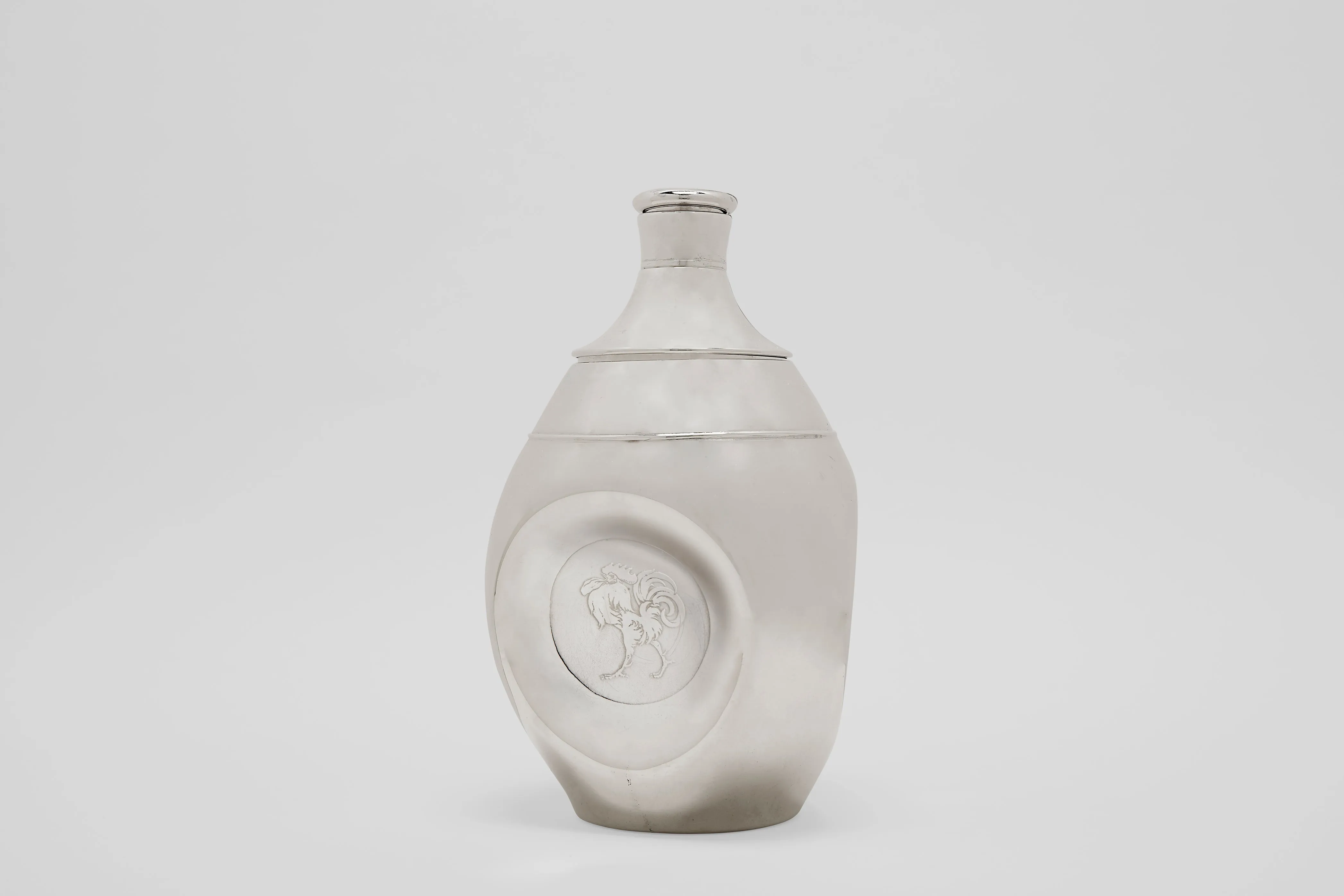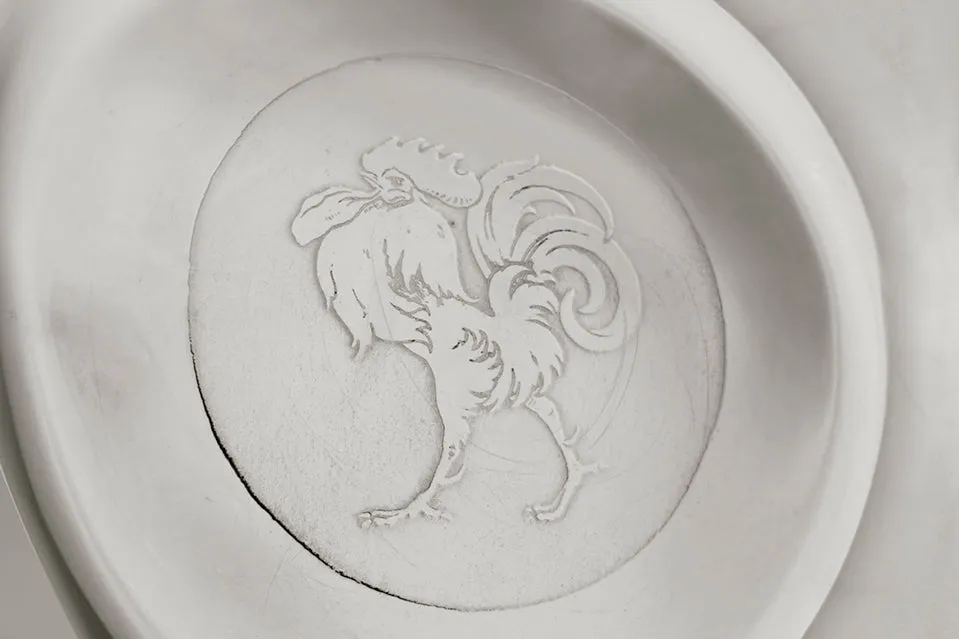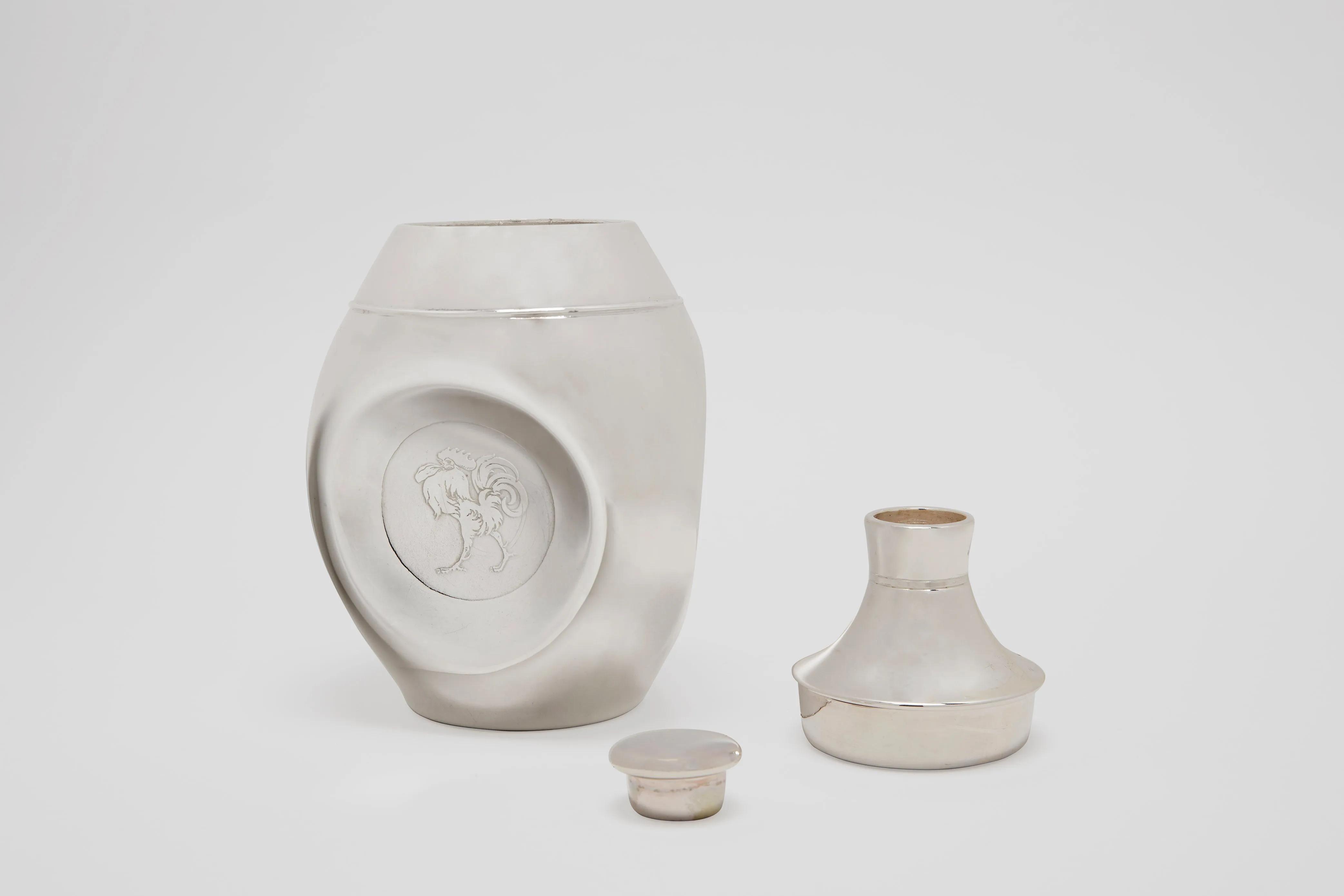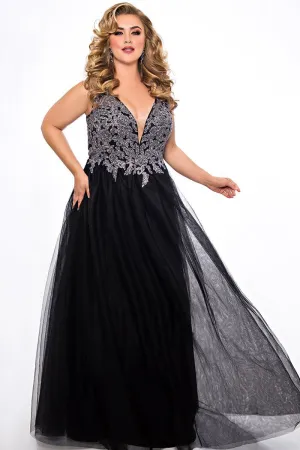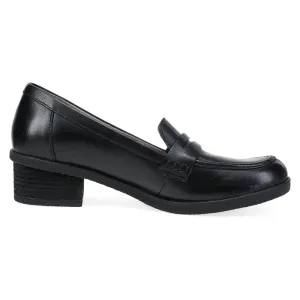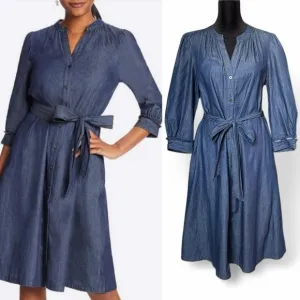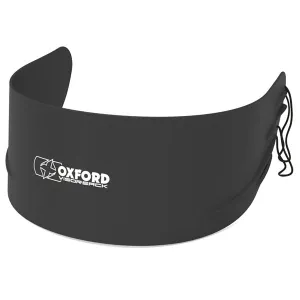A chromium plated pinched, Haig style, three sided cocktail shaker. This is a cocktail shaker based on the famous Haig whisky bottle fondly known as either the 'dimple' or 'pinch' bottle. This bottle came to market first in 1892 and was a very popular import in the American market at the turn of the twentieth century. There is no doubt that this design, apparently based on the shape of a collapsed still, was the inspiration for this distinctive cocktail shaker. The patent for the design was applied for January 11th 1927 by the Meriden International Silver Plate Co.
The cocktail shaker comprises of the 'traditional' three parts; base for pouring ice and ingredients into, the lid which encompasses a strainer, and then the top lid which is needed for decanting the finished cocktail through, keeping the ice out of the glass, acting as the strainer. This shaker features new lid design. Called the "Insico Stopper" with both a US and Canadian patent, it was introduced to improve and replace the popular and commonly found cork based lids. It was marketed as being more hygienic, easier to clean and unlike the cork options, it would not shrink or become odorous over time. Also, the cork stoppers were prone to damage as they became softer when wet, and more brittle when dry, after time. The three pinched panels each feature the iconic image of the cockerel engraved into them. The cockerel was a popular motive added to a number of bar pieces during the Art Deco movement. Perhaps simply being close in sound to the word 'cocktail'!
Meriden International Silver Plate Co., along with another notable cocktail shaker producer, Derby International, originate from Meriden, Connecticut. This part of America, from 1852, became the heartland of the American silver manufacturing industry. The 1887 Meriden Britannia catalog had over four hundred pages of items being offered. This included no less than twelve pages of barware. Meriden became known as "Silver City" and by the end of the 20th Century had sales of over $2.5 million a year. During the "Roaring" and supposedly dry! twenties" the International silver Company had offices located in Canada, England and across the US. They began to move away from traditional designs and employed designers like Rhode and Guild to come up with pieces that reflected the modern world emerging around them.
This is one of the most iconic and important pieces of barware history. Probably the most important book compiled on vintage barware by Stephen Visakay features most of the all time greats on the subject, with this shaker included on page thirty nine. The shaker is in superb condition throughout with a tight lid. It is a very useable size, and practical for even making one good cocktail. Made in America, circa 1927.

